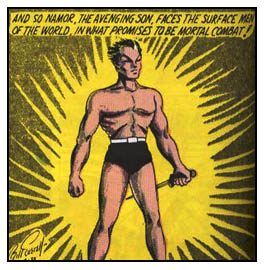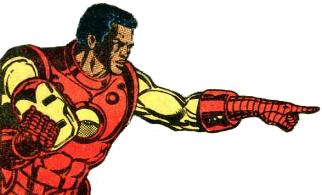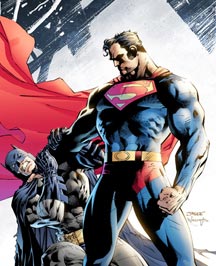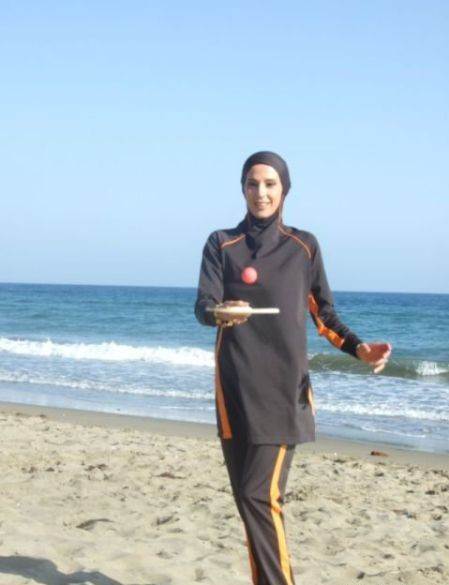In another thread titled Iron Man Now a Black Girl I asked the rhetorical question: where are the girls’ parents? Where is the child protection agency?
After thinking about this for a while I’ve come to realize that I was asking a ridiculous question. After all this is the comic book world not the real world. In comicdom most anything is possible including a fifteen-year-old girl wearing a man’s armor.
What made me think of this were Batman and Robin. As far as I know or can recall no one ever brought up the question that Robin was a minor or that that Batman was exposing Robin to danger. And there’s also Captain America and Bucky. And now that I’m thinking about it I’m wondering about the X-Men. What are the ages of the X-Men? To be honest I never asked this question before. I just assume that they were young and let it go at that.
Also in the same thread, Brian G.Turner said: Marvel and DC both have a problem with treating their comics as soft porn for young boys - something that seems to get surprisingly little comment. Male heroes get armour and capes, female heroes get bathing costumes and lingerie.
I’m not sure that I totally agree with this statement that DC and Marvel are creating soft porn. I remember when I was twelve or thirteen and I looked at girls I thought of them as being pretty and nothing more. Of course like most boys I was curious what they really look like, but I don’t think that’s really unhealthy or even pornographic.
To be fair to the writers and the artists of the comics I would also make try to make my female characters look attractive. Personally I don’t think any guy wants to look at a female superhero in dungarees or military fatigues. It’s just not that attractive. To me it’s a turnoff to try to get a girl or a woman to dress exactly like a man. I like the difference in the genders and I want to see the differences.
I remember years ago I bought Red Sonja comics not because the stories were good (in fact I don’t remember if any of the stories were good or bad) but because of the way the artist portrayed red Sonja. Even back then I knew that the metallic bikini was ridiculous, however I sure enjoyed looking at her.
I am sure that most guys would agree with me. The other thing to take in account is if I’m not mistaken is that the biggest buyers of comic books are boys.
If all of this makes me sexist okay I’m guilty. I’m sexist, but I don’t feel the need to change.
After thinking about this for a while I’ve come to realize that I was asking a ridiculous question. After all this is the comic book world not the real world. In comicdom most anything is possible including a fifteen-year-old girl wearing a man’s armor.
What made me think of this were Batman and Robin. As far as I know or can recall no one ever brought up the question that Robin was a minor or that that Batman was exposing Robin to danger. And there’s also Captain America and Bucky. And now that I’m thinking about it I’m wondering about the X-Men. What are the ages of the X-Men? To be honest I never asked this question before. I just assume that they were young and let it go at that.
Also in the same thread, Brian G.Turner said: Marvel and DC both have a problem with treating their comics as soft porn for young boys - something that seems to get surprisingly little comment. Male heroes get armour and capes, female heroes get bathing costumes and lingerie.
I’m not sure that I totally agree with this statement that DC and Marvel are creating soft porn. I remember when I was twelve or thirteen and I looked at girls I thought of them as being pretty and nothing more. Of course like most boys I was curious what they really look like, but I don’t think that’s really unhealthy or even pornographic.
To be fair to the writers and the artists of the comics I would also make try to make my female characters look attractive. Personally I don’t think any guy wants to look at a female superhero in dungarees or military fatigues. It’s just not that attractive. To me it’s a turnoff to try to get a girl or a woman to dress exactly like a man. I like the difference in the genders and I want to see the differences.
I remember years ago I bought Red Sonja comics not because the stories were good (in fact I don’t remember if any of the stories were good or bad) but because of the way the artist portrayed red Sonja. Even back then I knew that the metallic bikini was ridiculous, however I sure enjoyed looking at her.
I am sure that most guys would agree with me. The other thing to take in account is if I’m not mistaken is that the biggest buyers of comic books are boys.
If all of this makes me sexist okay I’m guilty. I’m sexist, but I don’t feel the need to change.












